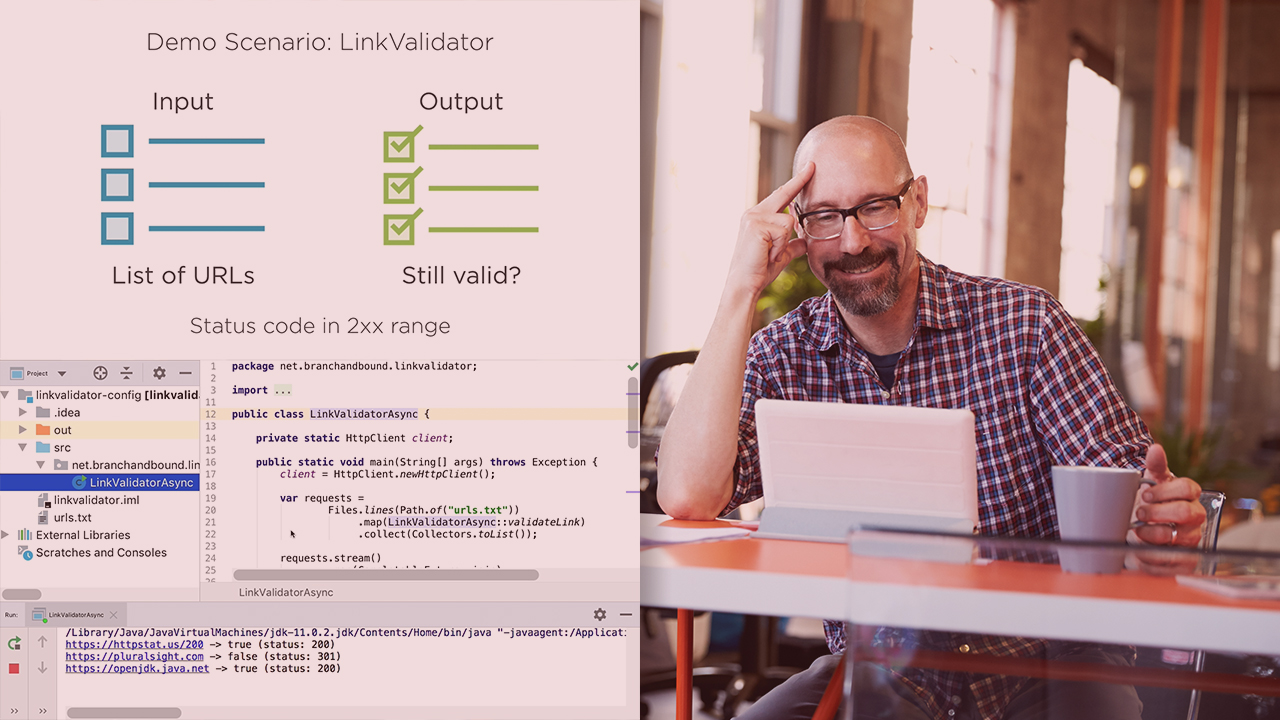- Course
Java Fundamentals: HttpClient
With Java's HttpClient API you can easily perform HTTP calls. It's a modern API supporting HTTP/1.1, HTTP/2, and WebSockets. This course shows how to work with HttpClient in a practical manner, and also explores some advanced features.

- Course
Java Fundamentals: HttpClient
With Java's HttpClient API you can easily perform HTTP calls. It's a modern API supporting HTTP/1.1, HTTP/2, and WebSockets. This course shows how to work with HttpClient in a practical manner, and also explores some advanced features.
Get started today
Access this course and other top-rated tech content with one of our business plans.
Try this course for free
Access this course and other top-rated tech content with one of our individual plans.
This course is included in the libraries shown below:
- Core Tech
What you'll learn
It used to be that performing HTTP calls in Java meant relying on an external library like Apache HttpClient. Since Java 11, a modern HTTP client is now part of the core platform. In this course, Java Fundamentals: HttpClient, you will gain the ability to work with this HttpClient API. First, you will learn to use HttpClient in a synchronous and asynchronous manner, including the use of CompletableFuture. Next, you will discover how to configure and use HttpClient in different scenarios, focusing on secure communication as well. Finally, you will explore some of the more advanced features of HttpClient, such as HTTP/2 Server Push, WebSocket communication, and Reactive Streams integration. When you're finished with this course, you will have the skills and knowledge of the HttpClient API needed to use it effectively in your own applications.

